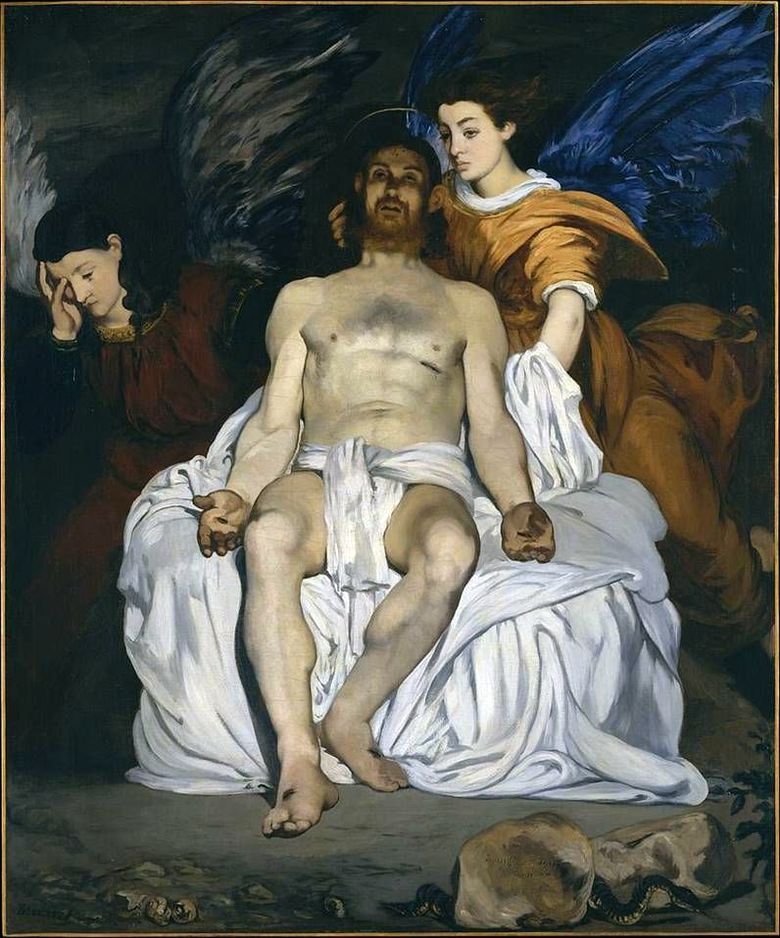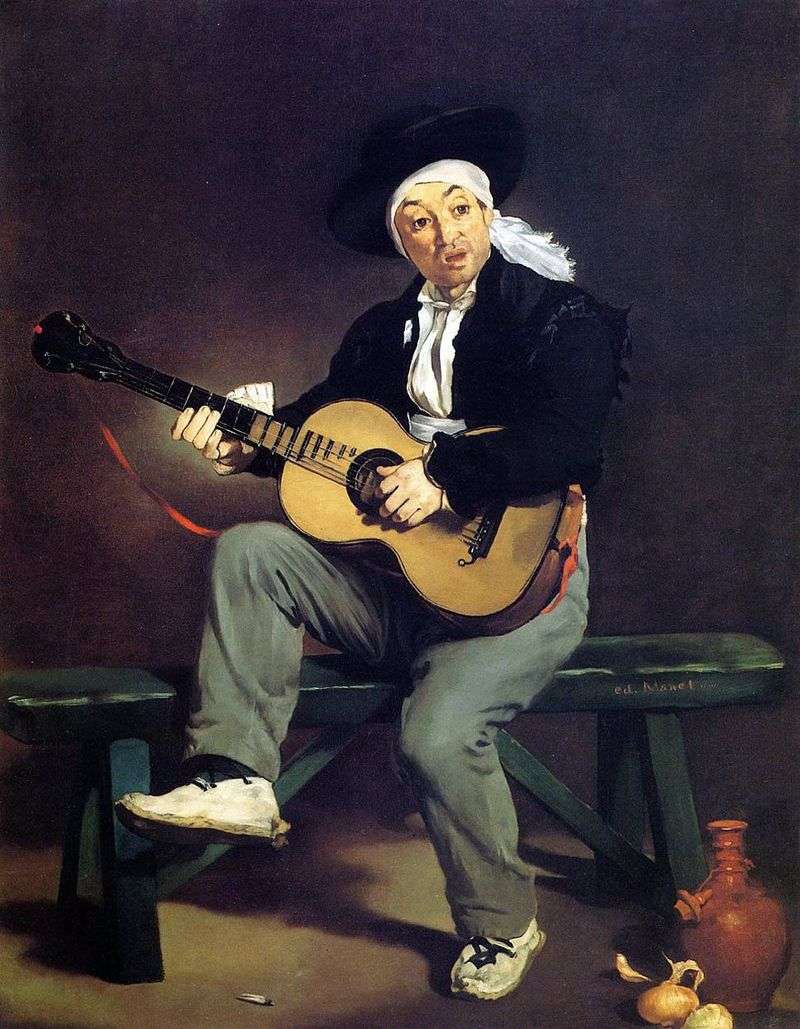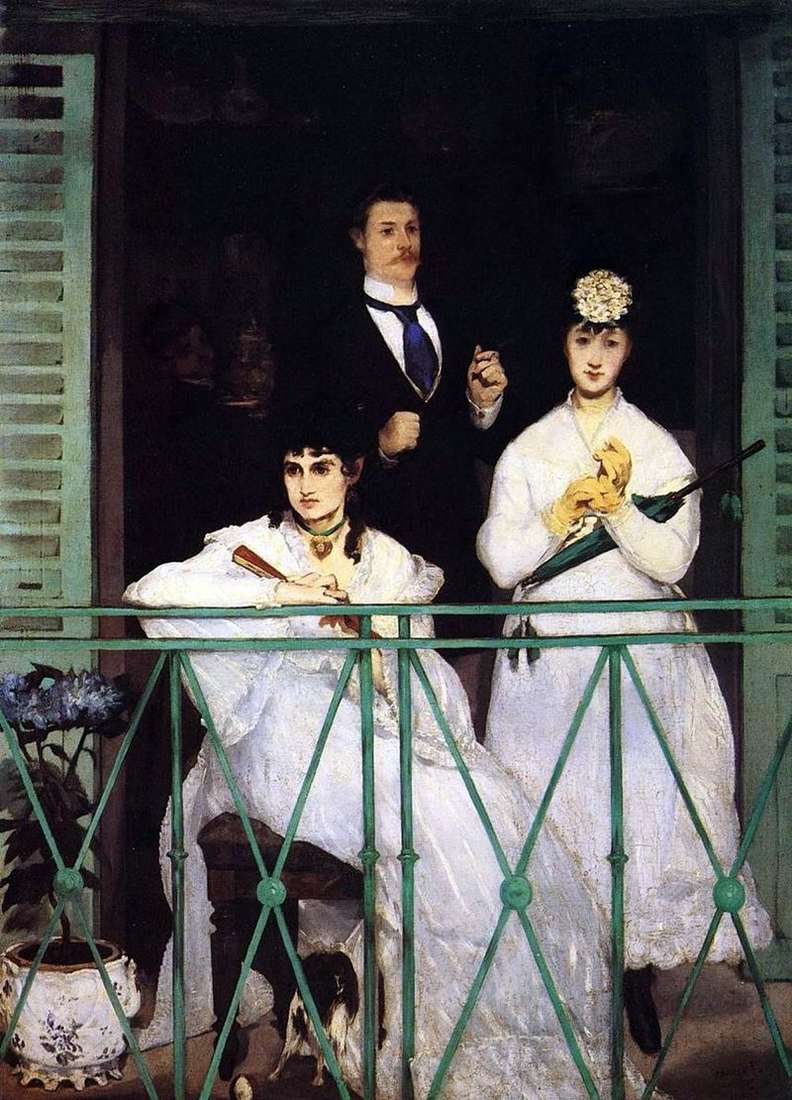
Mane has only a few paintings on a religious plot – the painter preferred landscapes, portraits and household observations. For the first time the master addressed this topic in 1864, writing the painting “Dead Christ with the Angels”.
On the white crumpled sheets in the center of the picture we see the lifeless body of the Son of God. His eyes faded, but his face did not lose determination and nobility. Two angels on the sides of the main character are deprived of any paraphernalia pointing to the heavenly affiliation – neither light nor nimbus. They can be confused with ordinary people who came to the body of the Savior. The dark background focuses the viewer on the details of the foreground, for which the author chooses clean bright tones.
The fact that Mane freely interprets the sacred history is clear to those who are familiar with the main subtleties of the plot. We expect to see Mary Magdalene, near the empty tomb, however, we see the dead Christ, surrounded by two angels. It is not known whether the author intentionally made this plot error or not, but information reached us that Manet himself lamented over his other inaccuracy. Only when the picture was in the Salon, the artist noticed that he depicted the wounds of Christ on the other side.
Critics, of course, did not hold back in their angry assessments. The canvas was accused of lack of spirituality, pointing out the mistakes and illiteracy of its author. The most cruel reproach was that Christ in the picture of Manet is more like a miner than a son of God.
Few people managed to see a masterpiece in the new picture and speak openly. One of these people was Emil Zola. The famous writer and publicist noted the strength and detail of this picture. Rejecting all the spiritual component of Zola, he asserted that for him the painting “The Dead Christ with the Angels” is a true in its image and a corpse strong in painting, written in plein air. Zola praised Mane for hardness and courage.
Today, the picture is rare for Mane’s story on display in New York.
 Le Christ aux anges – Edouard Manet
Le Christ aux anges – Edouard Manet Portrait of Emile Zola by Edouard Manet
Portrait of Emile Zola by Edouard Manet Old musician by Edouard Manet
Old musician by Edouard Manet Cherry Boy by Edouard Manet
Cherry Boy by Edouard Manet Eel and Mullet by Edouard Manet
Eel and Mullet by Edouard Manet Spanish guitar player by Edouard Manet
Spanish guitar player by Edouard Manet Balcony by Edouard Manet
Balcony by Edouard Manet Dead bullfighter by Edouard Manet
Dead bullfighter by Edouard Manet